Graham Reid | | 2 min read
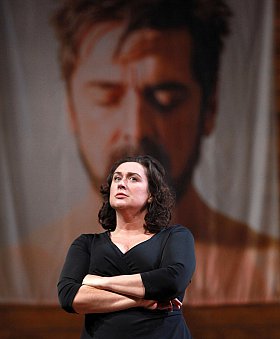
Although in later life Richard Wagner may have overstated the importance of The Flying Dutchman – first staged in 1841 – in the long arc of his career, there is no doubt it represented something of a breakthrough for him after the more traditional Rienzi.
Wagner's shift from overt drama to internal narrative and psychological turmoil certainly gives The Flying Dutchman a narrative of grand passions. Germanic passions, so delivered with stentorian authority or crippling self-doubt. Death looms over the story like a storm cloud, as much as love propels it.
The NZ Opera production of this work – with the APO in Auckland – is both big and sometimes necessarily boisterous (these are sailors and lusty women waiting for them, of course), and Australian Matthew Lutton has brought an astute eye and ear to this staging.
From the opening of the second act the drama really takes flight.
Having the cabal of women around the central character of Senta (the obsessed and ultimately doomed heroine) working in what looks like a garment house is masterstroke. As they polish and dress the naked male mannequins there is a frisson of raw sexuality and lust which acts as a counterpoint to the more elevated motives of Senta.
And when the chorus departs and Senta meets her Dutchman, the mannequins stand as starkly surreal sentinels, mute witnesses to the three-way motivations of Senta, her sea-captain father Daland and the object of her passion, the remote and mysterious Dutchman.
The staging of the first act however is less successful. In an attempt to convey the life aboard Daland's vessel the otherwise excellent design by Zoe Atkinson (interviewed here) consigns the crew into a large box to suggest their cramped quarters. The litter of wreckage across the stage however is one of the more inspired touches which are a hallmark of the production. The details are spare but telling.
However, especially when the lighting is bright within that cube, the crew's space lacks claustrophobia and looks more like something modernist from Grand Designs.
As a consequence, the first act feels static and even more mannered, and the lack of movement has the effect of a frieze against which the drama must be played out. The sudden erotic appearance of naked woman among the crew (and her rapid disappearance) however is astute and deftly telegraphs that roiling sexuality to come.
The cast assembled however are uniformly excellent in their delivery, although it must be said Jason Howard as the Dutchman comes off as more emotionally absent than the rest and doesn't bring the kind of brooding and mysterious intensity to the role one might have wanted. But he is a superb voice in this setting.
As Senta, Orla Boylan brings a troubled physicality to her emotions, and Peter Auty as her suitor Erik is a standout for his very human emotional confusion amidst the more esoteric passions which swirl around him. As is Shaun Dixon as the Steersman.
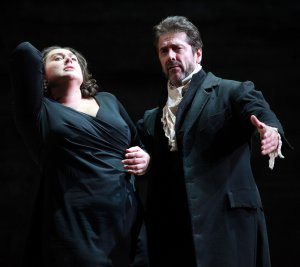 Paul Whelan (Daland) is also powerful
in the role, although discussions after had people noting he appeared
too young to be Senta's father. Which is rather like saying those
dead wouldn't really have walked in the final act.
Paul Whelan (Daland) is also powerful
in the role, although discussions after had people noting he appeared
too young to be Senta's father. Which is rather like saying those
dead wouldn't really have walked in the final act.
Wagner is about suspending disbelief and being immersed in the moment.
Propelling all this is the APO under Wyn Davis who deliver all the elemental power of Wagner's more atmospheric passages but also sensitively pull right back to allow those marvelous set pieces – like the moving duet between Senta and the Dutchman (right) – to be given full rein.
Opportunities to see a staged Wagner opera are rare in New Zealand (this the first in over 20 years) and the emotional and intellectual density of this production -- not to mention the simple but effective sets which have subtle layers of meaning -- mean this has great resonance and theatricality as well as a splendid cast and orchestra.
It would be hard to ask for more.
THE FLYING DUTCHMAN
Final performance, ASB Theatre, Aotea Centre. Saturday October 12, 7.30pm


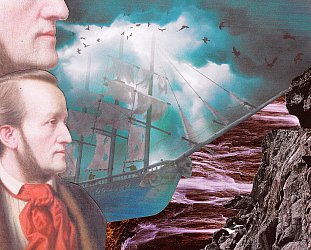
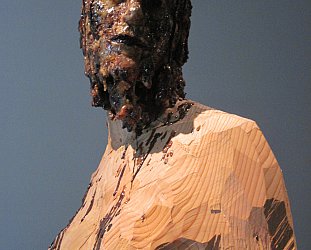
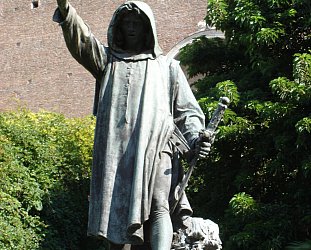

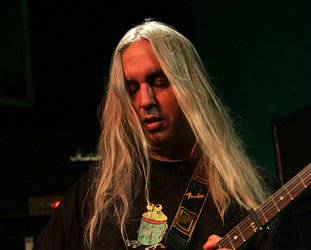
post a comment